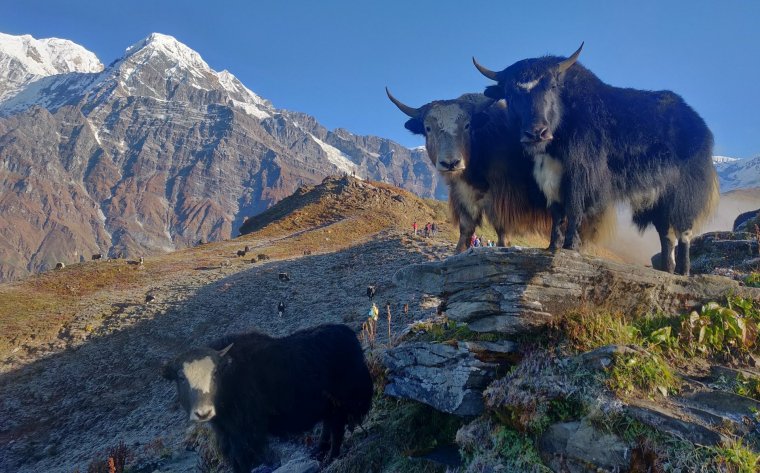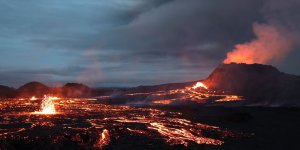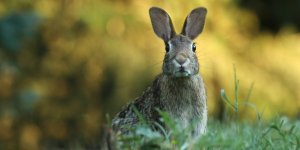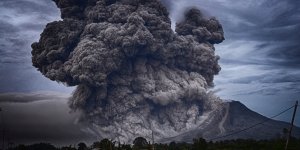| News / World News |
Large grazing mammals offset climate effects
A study conducted over a 16-year period in India’s Himalayan region confirms what scientists have always believed — that large, grazing mammals play a vital role in stabilising soil carbon and mitigating the effects of climate change.

Yaks. Photo: Sanjay Hona/Unsplash
Soil organic carbon created by decomposing matter supports all life on Earth and provides the largest carbon sink after the oceans.
Climate change and sustainable development can be affected by even the slightest change in the quantity and quality of soil carbon, says a paper by the UN Convention to Combat Desertification.
Researchers from the Indian Institute of Science, Bangalore, fenced-off grazing herbivores, such as yaks and ibex, in selected areas of Spiti in Himachal Pradesh state and found that it resulted in the increased stability of soil carbon in the grazed area while there were increased fluctuations in the excluded areas.
“Maintaining stable levels of carbon in the soil is key to offsetting the effects of climate change and the soil pool is a reliable sink that traps carbon,” says Sumanta Bagchi, an author of the study and associate professor at Centre for Environmental Science at the Indian Institute of Science.
According to the study, soil contains more carbon than all plants and the atmosphere combined and it is important to ensure its persistence.
“Dead organic matter from plants and animals remain in the soil for a long time until microbes break them down, and release carbon into the atmosphere as carbon dioxide,” said Bagchi.
Grazing ecosystems play a major role in “land–atmosphere feedbacks” because they cover about 40 per cent of the world’s terrestrial ice-free surface (nearly 50 million square kilometres) across grasslands, savannas and shrub steppes, and they contain about a third of all soil carbon, the study said.
Bagchi and his team of students collected soil samples from the fenced-off plots and compared the levels of carbon and nitrogen in the soil year after year. They found soil carbon fluctuating between 30 and 40 per cent in the fenced-off plots, while these elements remained steady in the plots that were open to grazing.
A key factor underlying these fluctuations is soil organic nitrogen generated by decomposing plants and animal wastes that help fresh plant growth.
Depending on the soil conditions, nitrogen can either stabilise or destabilise the carbon pool. Grazing by herbivores, however, changes their interactions in ways that tip the balance in favour of the former, the study said.
Soil organic carbon improves soil aeration (the amount of oxygen in the soil) as well as water drainage and retention, lowering the risk of erosion and nutrient leaching while improving soil fertility and nutrient-holding capacity.
Recovering lost soil carbon can be frustratingly slow and uncertain, the study notes. “Alongside a growing focus on increasing the soil carbon pool, an equally important climate mitigation solution lies in our ability to protect the pre-existing soil carbon, the study says.
“The findings of the study are not surprising — previous studies have shown the importance of protecting grazing animals, whether domestic or wild, to keep soil carbon stable and mitigate climate change,” says Krishna Gopal Saxena, an independent consultant on ecosystem conservation and former dean at the School of Environmental Sciences, Jawaharlal Nehru University, New Delhi.
According to Saxena, who was not involved with the study, while grazing is beneficial, there is a need to safeguard against overgrazing as both excessive and intensive can equally be detrimental to ecosystems.
“Much depends on the specific ecosystem and also kind of large mammals that are concerned — elephants and bison have different grazing or foraging patterns than smaller grazing mammals such as goats and sheep, for example,” Saxena said.
“In Spiti, it is common to see blue sheep grazing alongside livestock and this works well for ecology because of ‘species preference’ with blue sheep preferring to graze on woody, hard shrubs while livestock generally prefers softer material,” said Saxena who has expertise in high-altitude ecology.
“It is also worth considering that soils that are rich in organic carbon and nutrients may not always be considered to be healthy, especially if it causes injury to crops or supports pests,” Saxena said. “Soil health as a dimension of ecosystem health can be seen in terms of resistance and resilience of soil in response to various stresses and disturbances.”
However, Saxena pointed to the need to quantify carbon emissions from the dung of grazing animals, especially methane, a greenhouse gas that lingers in the atmosphere many times more than carbon dioxide.
“Methane emissions from cattle have not been properly quantified and existing studies and estimations are based on lab experiments.”
While previous studies focused on measuring carbon and nitrogen levels at long intervals on the assumption that accumulation or loss of carbon were slow processes, the present study considered shorter-term, interannual fluctuations that can be consequential for climate change, linked as they are to large mammalian grazing, said Dilip GT Naidu, a PhD student working with Bagchi and a study author.
In the ongoing research in Spiti, Bagchi and his team are looking into how domestic herbivores such as goat and sheep differ impact the ecosystem differently from their wild relatives.
“Domestic and wild herbivores are very similar in many respects, but they differ in how they influence plants and soil,” says Shamik Roy, a team member and also an author of the study.
“Understanding why they are not alike can lead us toward more effective stewardship of soil carbon.” (SciDev.Net)
YOU MAY ALSO LIKE





